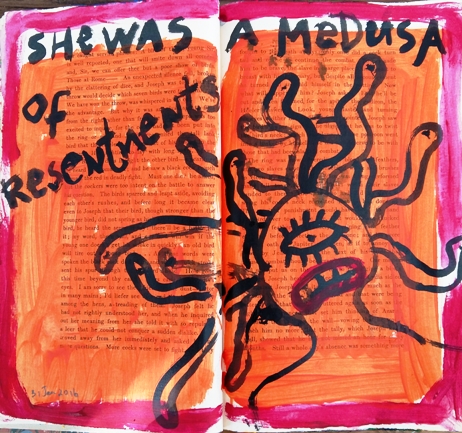This blog Here is closed for the time being.
I am Now on Instagram (actually, have been for the past 4 years) @mariana.swart
0.x.z
fra(a)iing
Thursday, May 2, 2019
Monday, May 9, 2016
Thursday, April 28, 2016
Saturday, March 26, 2016
#288 and #289.
In October 2013 a boat carrying more than 500 Eritrean and Somalian migrants sank off the coast at Lampedusa, Italy. More than 360 people drowned. One of them, a young woman, drowned while giving birth to her baby. They were labelled victim #288 and #289. Her name was later found to be Yohanna.
Read this article about borders and identity by Frances Stonor Saunders:
For Yohanna. Art journal page.
Read this article about borders and identity by Frances Stonor Saunders:
For Yohanna. Art journal page.
Tuesday, March 1, 2016
Waiting for the light.
Journal entry after the Lily mine cave-in near Barberton. More than 80 miners were brought to safety, but three mine employees - Yvonne Mnisi, Pretty Mabuza and Solomon Nyarenda - were trapped in a container office that was swallowed by the massive sinkhole. To date they have not been rescued. Last signs of life were detected 20 days ago.
Monday, February 15, 2016
Sunday, January 17, 2016
A Hoi Polloi Cabinet of Curiosities.
Submission for the Cabinets of Curiosities exhibition in December 2015:
Statement:
This work
addresses issues of exclusivity, value, wealth vs poverty, ownership, lack of access vs
accessibility, privilege and status.
The original
Wunderkammern were limited to those who could afford them, and thus were
markers of privilege, status and exclusivity. Those who collected the ‘curious’
and fantastical objects were wealthy rulers, aristocrats and merchants – with
the means and time to undertake expensive journeys and travel trade routes. The objects collected were exclusive, special
and rare, and therefore expensive. Museums have become the modern cabinets of
curiosities – where the ‘populace’ is admitted (at a price) and allowed to peer
through glass at exclusive objects (but not to touch). Judgement is passed not
only on the value of objects, but also on the status of the viewer.
I would argue
that the curious detritus of modern industrial and technological society are no
less fantastical and worthy of our attention and scrutiny. Anyone can build such a collection – the
objects are available to anyone for free, and no expensive journeys are
necessary.
A Hoi Polloi Cabinet of Curiosities is
totally accessible to the viewer, who may touch the objects. If the viewer so
wishes, he or she may also remove a card with an object and take ownership.
At the end of the exhibition, 22 object cards had been removed:
Subscribe to:
Posts (Atom)






